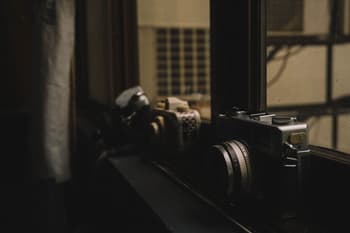The rise of social media has made access to celebrity media readily available, but free access does not necessarily mean free use. There are rules surrounding the use of someone else’s image or likeness. Celebrities like Ariana Grande and Kim Kardashian have taken legal action against brands like Forever 21 and Missguided for unauthorised use of their likeness in their promotional materials. This article looks at the legal risks brands can face when using another person’s image in their marketing campaigns or product designs without the appropriate permissions.
Inspiration vs. Duplication
Imagine that you have just launched a new clothing line featuring designs and photography inspired by Ariana Grande or have made a post advertising your new range on Instagram and tagged Kim Kardashian in your caption. While you are not claiming to be directly collaborating with or selling products on their behalf, you may face potential legal implications.
Creating original artwork, such as a caricature or stylised illustration inspired by a celebrity, may be a safer approach. Using actual photographs of well-known personalities without obtaining proper licenses could expose your brand to legal risks.
Ownership rights are associated with photographs posted online on social media or a website. These photographs will belong to someone else (usually the photographer who took the image). Any unauthorised use may result in a copyright infringement claim against you. Be mindful of this when you download, publish or otherwise use photographs you find online.
Legal Risks
In Australia, there is no ‘right to publicity’ or ‘image right’ allowing celebrities to control the use of their image. However, they can rely on the Australian Consumer Law (ACL) and the common law ‘tort’ of passing off if an individual or business misuses their image.
Continue reading this article below the formPassing Off
Passing off is a common law action. You can use it if someone falsely claims that another entity associates with or endorses your goods or services.
A plaintiff must establish the following elements to succeed in an action for passing off:
- that they have a sufficient reputation or goodwill;
- a misrepresentation was made that they were associated with or endorsed another’s goods or services; and
- this misrepresentation caused or is likely to cause damage to their image.
Reputation
A plaintiff must have an established reputation in the same area or territory that the other party sells and markets the goods or services. For example, if you accuse another party of ‘passing off’ goods being sold in Sydney, you must have an established reputation in Sydney. The plaintiff must also be able to provide evidence of that reputation. The plaintiff does not need to be an Australian company to bring a claim forward. For example, the plaintiff could be an overseas company with a presence in Australia.
Misrepresentation
Misrepresentation occurs when one party presents their goods or services in a way that suggests a connection with another entity. To successfully argue misrepresentation, the plaintiff must show that customers are likely to be misled by how the other party has presented their goods or services. For example, a social media post using a celebrity image may suggest to a consumer that the celebrity endorses the product.
Damage
The last element of passing off requires a plaintiff to prove that the other party’s misrepresentations have caused or are likely to cause damage to the plaintiff’s image and business.
Remedies
If your new clothing line leads customers to associate your brand with a particular celebrity, that celebrity may take legal action for passing off against your company. If a plaintiff is successful, then the court may order an injunction. An injunction would prevent the offending party from continuing with the conduct that has amounted to passing off. Additionally, the court can order the offending party to compensate the plaintiff.
Misleading or Deceptive Conduct
Similar to the common law tort of passing off, the ACL prohibits engaging in conduct that could mislead or deceive consumers.
| Section Number | Description |
| Section 18 | A person must not, in trade or commerce, engage in conduct that is misleading or deceptive or is likely to mislead or deceive |
| Section 29 (1)(g) | A person must not make a false or misleading representation that goods or services have sponsorship, approval, performance characteristics, accessories, uses or benefits. |
This law protects every business, brand and person — not just celebrities. However, when the image is of a well-known person or brand, there is a higher risk of misleading the public to believe that there is an association or endorsement.
Run This Town: Rihanna Takes on Topshop
In 2012, Topshop brought out a t-shirt bearing the image of Rihanna.
Although Topshop had obtained a licence from the photograph owner, they had not obtained permission to use the image from Rihanna. Rihanna brought proceedings against Topshop, claiming their conduct amounted to passing off. The judge found in favour of Rihanna, which was then upheld on appeal. In particular, the following facts resulted in the decision:
- Rihanna had goodwill and a reputation in her image;
- although using an image of a well-known person does not necessarily result in a misrepresentation, in this case Topshop had made an effort to establish an association. For example, Topshop ran competitions, made statements about Rihanna’s visit to its store, and tweeted about the pop star on social media. As a result, the judge decided that Topshop’s conduct was likely to mislead consumers that they had an association with or endorsement from Rihanna; and
- the damage caused included a lost financial opportunity for licensing the right to use her image and a potential loss of sales for her merchandising.

This fact sheet outlines your rights and obligations as an AI artist regarding intellectual property and copyright.
Key Takeaways
Whether you’re using photos of celebrities from the internet or merely drawing inspiration from them for your designs, you could potentially face legal claims under consumer protection laws or for misrepresentation. For a celebrity to win such a case against you, they must demonstrate that using their image would likely mislead consumers into thinking there’s an official association or endorsement. Simply showing that a brand used its image without permission is usually insufficient.
Whether you are directly using photos of celebrities for your brand or merely drawing inspiration from them for your designs, you may open yourself up to claims under the ACL or the common law tort of passing off. To succeed in these claims, a celebrity must show that using their image will likely mislead consumers into thinking that they are connected to or endorse your brand. Simply showing that a brand used its image without permission is usually insufficient.
If you need help using a celebrity image as part of your marketing or product design, our experienced IP lawyers can assist as part of our LegalVision membership. For a low monthly fee, you will have unlimited access to lawyers to answer your questions and draft and review your documents. Call us today on 1300 544 755 or visit our membership page.
Frequently Asked Questions
Using a celebrity’s image without the appropriate licence may result in legal consequences, including the celebrity bringing an action against you for ‘passing off’ or claiming that you have engaged in misleading or deceptive conduct.
Passing off occurs when one party represents that their goods or services are the services of someone else.
Misleading or deceptive conduct is conduct that is likely to mislead or deceive someone in the course of trade or commerce.
We appreciate your feedback – your submission has been successfully received.











